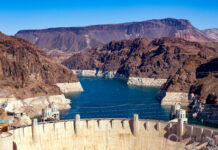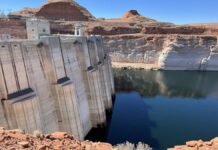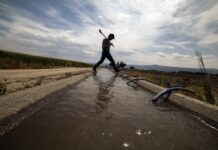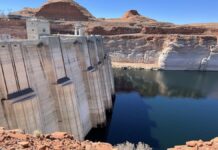Once a showcase of American optimism and engineering, Hoover Dam faces new power generation...
The long-term drying of the American Southwest poses a gathering and measurable threat to hydropower generation in the Colorado River basin.
Should Lake Mead, the reservoir formed by Hoover Dam,...
Feds: Colorado River’s Flaming Gorge Reservoir able only to deliver two more emergency water...
As drought and climate change sap the Colorado River, even the water in the Upper Basin’s high-elevation reservoirs isn’t enough to protect the larger system.
Grizzly Reservoir to be drained next summer for rehab work
The rehabilitation of Grizzly Dam addresses safety concerns of corroded steel, seepage and operational problems.
After initial failure, new effort could bring green hydrogen pilot project to Yampa River...
Colorado, New Mexico, Utah and Wyoming form a partnership to compete for the financing of new hydrogen hubs.
Emergency Colorado River rescue plan likely to include more Flaming Gorge releases, payments to...
Colorado, New Mexico, Utah and Wyoming may face requests for voluntary cutbacks in their use of Colorado River water next year.
Recent drop in Lake Powell’s storage shows how much space sediment is taking up
A new study shows that sedimentation from the Colorado River means that Lake Powell's storage capacity is lower than previously believed.
Blue Mesa is threatened by a two-decade-long drought and downstream obligations
Experts say it will take a lot more than one snowy winter to refill the reservoir.
Declining levels at Lake Powell increase risk to humpback chub downstream
Low levels and warming waters threaten to increase invasive species in the Colorado River.
Powell’s looming power problem
Drought and demand threaten a critical component of the Western grid as Lake Powell approaches minimum power pool for the first time.
Feds call for more water recycling, conservation as Colorado River deteriorates
Water recycling, conservation programs and repair of leaky reservoirs and pipelines will help restore the Colorado River, according to federal officials.












